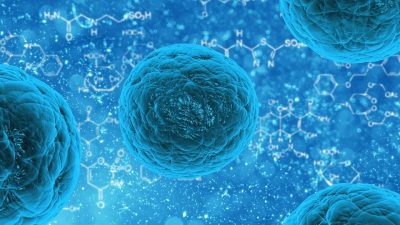Le limbal stem cells (LSC) are adult stem cells that differentiate into the corneal epithelium. Functional LSCs are essential for maintaining the integrity of the corneal surface and the transparency of the cornea. Indeed, the limbus, the transition area between the cornea and the sclera, acts as a barrier against the invasion of conjunctival epithelial cells.
Direct damage to LSCs and/or destruction of their microenvironment leads to a clinical condition called deficit limbal stem cells or LSCDs. When the barrier function of the limbus is compromised and the corneal epithelium is replaced with conjunctival epithelial cells, the hallmark of LSCD, a phenomenon of neovascularisation within the corneal epithelium and stroma that can lead to corneal opacification and eventually to vision loss. Over the past four decades, most studies on LSCD have focused on the biology of LSCs and their function in maintaining the regeneration of the corneal epithelium under pathological conditions.
A reviewpublished in January 2018 in the magazine Ocular Surface, summarises the current limitations and most recent advances in the diagnosis of LSCD.
Accurate diagnosis of LSCD is crucial because early intervention with appropriate treatment can prevent progression of the condition and further damage to the ocular surface. For example, the penetrating keratoplasty cannot restore vision to an eye at an advanced stage of LSCD, at least not before optimal levels of functional LSC are restored. Moreover, in recent decades, the diagnosis of LSCD has been made mainly on the basis of the patient's history and clinical signs. However, the interpretation of the latter is not always unambiguous. Suffice it to say, the presence of a fibrovascular layer may be caused by a previous infectious keratitis rather than LSCD.
The results of this survey indicate that current diagnostic criteria cannot accurately assess the severity of LSCD mainly because the structural changes characteristic of this pathology can occur before the onset of the manifestation of clinical signs. Moreover, the normal variations in limbic structure can further complicate the interpretation of signs. For example, while it is true that the presence of the Vogt palisades implies a normal healthy limbus, the absence of such structures can be either an early anatomical change in mild LSCD or the result of a normal ageing process. The same reasoning can be made for the calyciform cellsTheir presence on the corneal surface is a sign of epithelial invasion of the conjunctiva, but their absence does not exclude  necessarily LSCD. Therefore, the cytological examination is not a quantitative test and cannot be used to quantify the severity of LSCD.
necessarily LSCD. Therefore, the cytological examination is not a quantitative test and cannot be used to quantify the severity of LSCD.
In addition, there is no general consensus on methods to assess the severity and stage of LSCD. It is difficult to distinguish severe LSCD from other forms of LSCD based on current diagnostic methods. Although the clinical presentations of severe LSCD and total LSCD are similar, their clinical outcome and prognosis after treatment are likely to be different. In fact, a recent study found that normal limbal epithelial cells were present in eyes classified as having 'total LSCD'.
In general, therefore, current diagnostic methods and criteria for LSCD are based solely on clinical examination and traditional cytology. To overcome the shortcomings of current LSCD diagnostic methods, researchers are evaluating the usefulness of new mode of in vivo imaging of the ocular anterior segment which are powerful tools for analysing and quantifying dynamic changes in ocular surface structure at the cellular level.
The authors of the study also call for a new series of Standardised criteria for staging LSCDestablished using a combination of the assessment of clinical presentation, quantitative analysis of ocular surface structural changes and the detection of molecular biomarkers.
Bibliography
Le Q, et al. The diagnosis of limbal stem cell deficiency. Ocul Surf. 2018 Jan;16(1):58-69. doi: 10.1016/j.jtos.2017.11.002.
Dr. Carmelo Chines
Direttore responsabile
